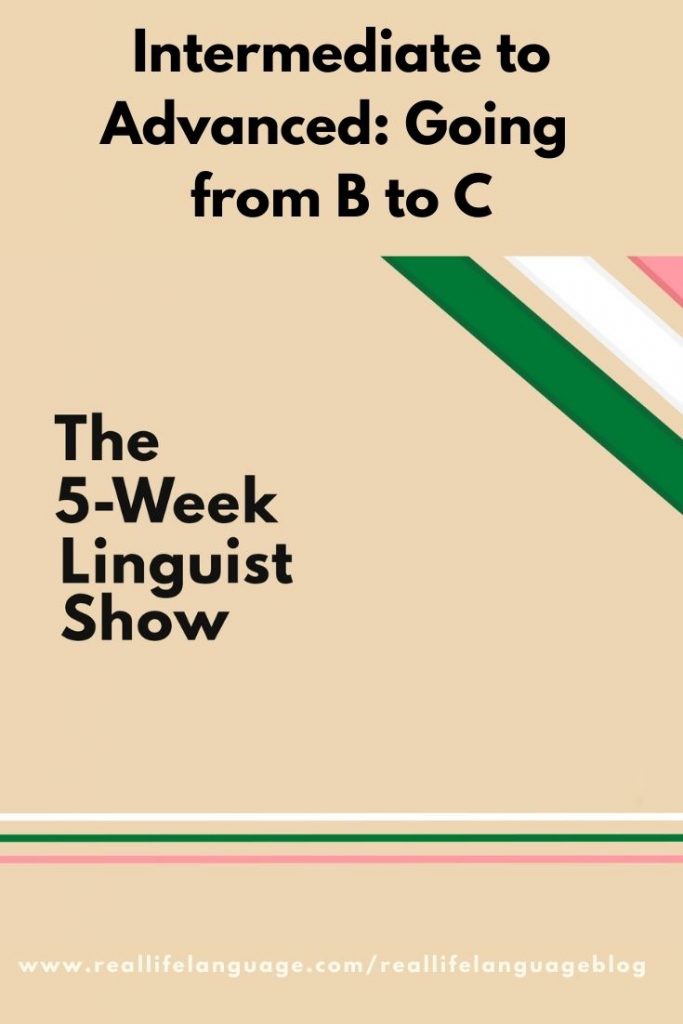
Welcome to The Five-Week Linguist Show. We are going to talk about going from Intermediate to Advanced in speaking a foreign language.
(0:50) – There’s a range of learning levels for people who want to learn how to assess themselves. The organization is based on the Common European Framework for reference A, B, and C or the actual novice, intermediate and advanced.
(2:09) – It takes twice as long to move through the level where you’re making your own sentences. This is where you can start expressing yourself.
(02:53)- You’re speaking in paragraphs, not eloquent, refined, polished paragraphs. It takes twice as long to move through this level ,but it’s super rewarding.
(05:01)- Target language input is the same for the for my intermediate studies, B studies as they are for A study. Start to use Yabla to help you with learning with different language.
(06:00) Spend some time on Netflix. It’s a potent tool, so it works. And there’s access to more languages than just the six on Yabla.
(06:30) YouTube is the largest search engine in the world. There are grammar tutorials for language learners. The site also has a lot of content from around the world that you want to access. It’s a great place to learn new things about languages.
(07:35) ReadLang is a Chrome extension that helps you learn languages. It gives you access to authentic newspapers and magazines, which brings you to even more of the content. The app is free and available in English and French for those who want to sign up.
(08:32) The American Council on the Teaching of Foreign Languages talks about different modes of communication. The presentational mode, where you’re one person is speaking, and then there’s the interpersonal mode where you talk back and forth with someone.
(09:40) If you’re not comfortable with talking, try working through the mistakes first before you can move on to the good stuff.
(10:20) Italki will connect you with native speakers and with all that input you’re getting from these native speakers; you’re going to understand that.
(11:34) If you want to improve your speaking, listen and read twice as much as you speak and write. Get a notebook and set a timer and write and find out what your gaps are.
For more resources on learning and teaching languages, to get on our mailing list, or to get the workbook for this course, be sure to visit RealLifeLanguage.com/reallifelanguageblog. If you are listening to this episode, don’t forget to subscribe and leave us a rating.
Want to go from novice to intermediate, intermediate to advanced and beyond? Hit all of your linguistic goals in any language: https://real-life-language.teachable.com/p/the-5-week-linguist
Learning a New Language: How Long Does It Take?
Podcast: Play in new window | Download
Subscribe: RSS